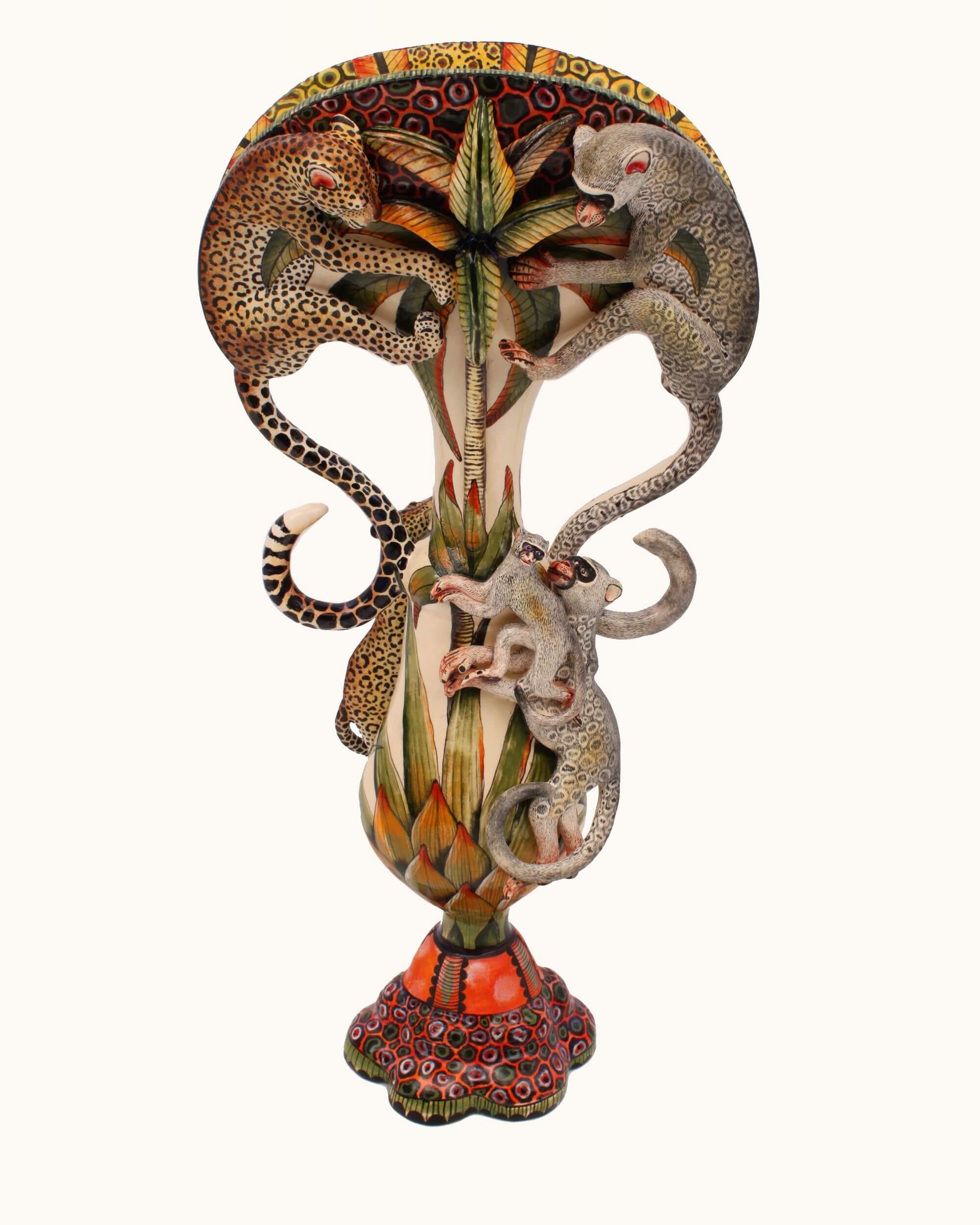Advertisement
The oldest ceramic object is a nude female figurine dating back to about 25,000 BC, found in the Moravian Basin in the Czech Republic. Generally accepted to be a fertility symbol that formed part of a wider culture, no one knows how the first one was made. Perhaps a man yearning for his wife, or even – let’s not limit ourselves here – a youth on the brink of puberty, fashioned a voluptuous woman from a handy bit of clay and, not appreciating his handiwork, tossed it in the fire. Unbeknown to him this action hardened his creation, enabling it to last until this lifetime…
Fiction? Perhaps, but there is enough evidence of pottery vessels around to know that somewhere along the line creativity and functionality met – across several locations and a diverse population. Some of the earliest finds are in China (18,000 BC), Russian Far East (14,000 BC), Japan (10,500 BC) and Sub-Saharan Africa (7,000 BC).
Tradition
A little closer to home, African pots – including the much-loved Zulu pots you see at roadside markets in KwaZulu-Natal – are beautifully formed vessels that are simultaneously art, craft and functionality, shaped to form with bare hands and often decorated with beautiful symbols. They were traditionally used to carry water, store food and milk, and for cooking and the making and serving of beer – and sometimes still are.
The 2,000-year-old Zulu tradition of women potters continues to this day, with this specialised skill often passed down in families. Traditionally the skill revolved around making beer pots, an earthen vessel for making and serving beer that still has significance today. It is used at coming-of-age and marriage ceremonies, to introduce a new child to the family’s ancestors, and also at burial ceremonies.
The age-old process of pot making begins with the collection of clay near the homestead, allowing it to dry out, grinding it to the correct fineness and reconstituting it with water when required. Sometimes sand, pebbles or old pottery, chopped dried grass and even dung are kneaded into the clay to decrease the shrinkage during the drying process. Pots are created by adding coils of clay to a clay base, pinching them together and smoothing the surfaces out. Decorative elements are added when the pots have dried, but before their first firing. They are then polished with animal fat or soot, and re-fired to create a dark, glossy finish.
Advertisement
Modern artistic renditions of the traditional Zulu beer pot by world-renowned potters such as the late Nesta Nala (whose daughters now continue the legacy) and Clive Sithole, among others, have made their way into museums, galleries and the homes of avid collectors. A great place to see a collection of Zulu arts and craft is at the Vukani Cultural Museum in Eshowe, where several of the artists exhibiting have received international recognition for their work.
Innovation
Taking the craft of pottery to another level is the largest pottery studio in South Africa, Ardmore Ceramics, in the KZN Midlands. It all started when Bonnie Ntshalintshali, a young girl who had suffered polio as a child, started an apprenticeship with artist Fée Halsted on their farm in Winterton. Bonnie’s natural ability in sculpture and painting was encouraged, and soon she was creating her own pieces that told stories of her mission school education and strong Zulu background.

By marrying an aesthetic that is not quite African nor European, Fée developed the style that has made Ardmore Ceramics internationally renowned – intricately decorated items in a Western ceramic tradition that feature local flora and fauna motifs interspersed with mythological beings. These wonderfully creative masterpieces evoke an African aesthetic but are worlds apart from what we consider traditional African pottery. They are in fact narrative-based creations that tell of life, love, nature and even politics. These much sought-after ceramics grace the halls of Buckingham Palace and the White House as well as museums and galleries around the world, and they would look exceptional in any upmarket home – just be warned: the price tags are justifiably heavy.
So, whether your choice is traditional Zulu pots, exquisite Ardmore ceramics or something big, bold and chunky you could almost hide in, you need to know the best way to incorporate them into your interior.
Making it yours
Here are a few tips on displaying your pottery and ceramic treasures:
- Arrange artfully – place your groupings of pots purposefully, and to one side of a table top, bookcase or other surface. Place taller towards the back, rounder items centrally and fill the gaps with the smaller items. Try to create a look that feels as though it happened over time, not in one major shopping spree.
- Group by colour – grouping your pieces of pottery together by colour or theme in a central location tends to keep the space looking less cluttered. Imagine the impact of a collection of pottery and ceramic vases in shades of green set on white floating shelves against a white wall … or a grouping of three or five Zulu pots of different heights and dimensions on top of a kitchen cupboard or shelf. The strong lines created by grouping several pieces of varying sizes, but the same colour, draw the eyes towards the display.
- Work within your style – decor styles vary and can be anything from modern and contemporary to rustic, vintage or eclectic, to pretty much anything in between. Don’t feel that you need to be a slave to current decor trends; rather find your own style and allow it to grow and change as you do.
- Add plants – a great way to add colour and interest to your home is by adding plants. Whether it be a piece of aloe cut from your garden popped into a Zulu beer pot, a couple of large strelitzia leaves standing upright in an oversized pot or a potted geranium trailing over the edge of a terracotta pot, the greenery will make a difference. Just remember to keep the scale of both in proportion – you don’t want the plant overpowering the pot, or vice versa. Remember to always place your pot on a protective material so that the damp from the plant doesn’t damage your furniture.
When it comes to including pottery and ceramics in your home, the choices are endless, but make it something that you love, whether the price tag breaks the bank or only requires ‘small change’. Your home is where you wind down and relax, so fill it with beautiful things that bring you joy.



